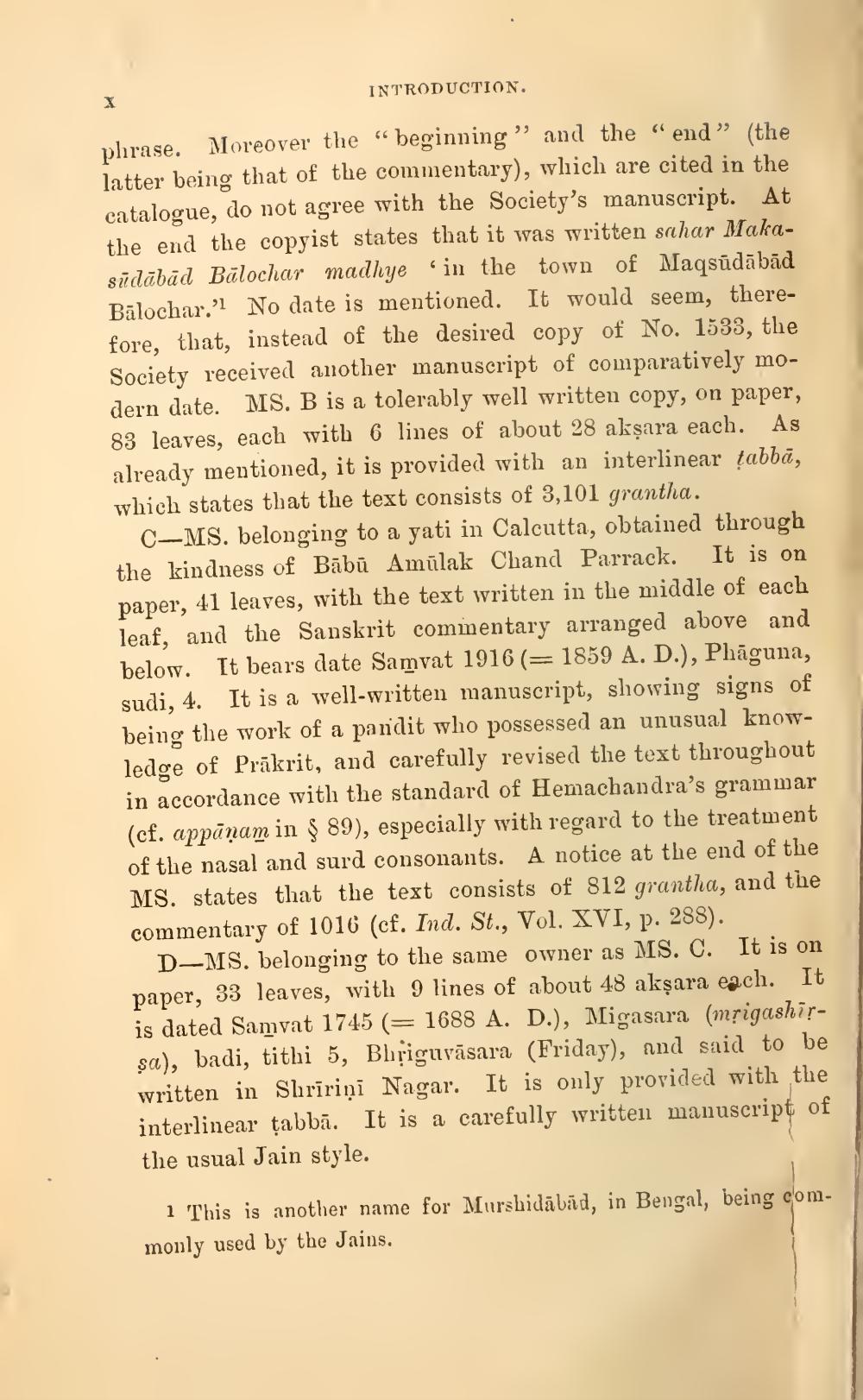________________
X
INTRODUCTION.
phrase. Moreover the "beginning" and the "end" (the latter being that of the commentary), which are cited in the catalogue, do not agree with the Society's manuscript. At the end the copyist states that it was written sahar Makasūdābād Balochar madhye in the town of Maqsūdābād Balochar." No date is mentioned. It would seem, therefore, that, instead of the desired copy of No. 1533, the Society received another manuscript of comparatively modern date. MS. B is a tolerably well written copy, on paper, 83 leaves, each with 6 lines of about 28 akṣara each. already mentioned, it is provided with an interlinear ṭabbā, which states that the text consists of 3,101 grantha.
As
It is on
C-MS. belonging to a yati in Calcutta, obtained through the kindness of Bābū Amulak Chand Parrack. paper, 41 leaves, with the text written in the middle of each leaf, and the Sanskrit commentary arranged above and below. It bears date Samvat 1916 (= 1859 A. D.), Phaguna, sudi, 4. It is a well-written manuscript, showing signs of being the work of a pandit who possessed an unusual knowledge of Prakrit, and carefully revised the text throughout in accordance with the standard of Hemachandra's grammar (cf. appānam in § 89), especially with regard to the treatment of the nasal and surd consonants. A notice at the end of the MS. states that the text consists of 812 grantha, and the commentary of 1016 (cf. Ind. St., Vol. XVI, p. 288).
D-MS. belonging to the same owner as MS. C. It is on paper, 33 leaves, with 9 lines of about 48 akṣara each. It is dated Samvat 1745 (= 1688 A. D.), Migasara (mrigashirsa), badi, tithi 5, Bhriguvāsara (Friday), and said to be written in Shririni Nagar. It is only provided with the interlinear ṭabba. It is a carefully written manuscript of the usual Jain style.
1 This is another name for Murshidabad, in Bengal, being commonly used by the Jains.




